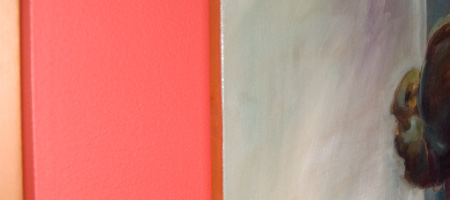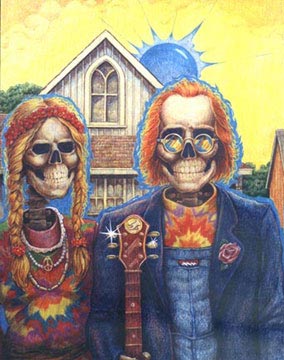
Legalities 28: Copyright Ownership for Collaborative Projects
Linda Joy explains the difference between joint works and derivative works, the role of art directors, and the various copyright implications when more than one person is involved in a project.
Q. I am a web designer/graphic artist who has partnered with a friend to produce an idea she had for a new surface design for a certain product. She developed a rough prototype of the concept. The idea was brilliant but the execution was poor. She convinced me to assist her in the design, execution and sale of the concept. We had an informal agreement that allowed us to share profits. It worked well, for the most part, but we are having difficulties determining who owns the copyright.
She produced the prototypes and some of the early production, so she thinks she should retain all copyrights. The current design has evolved dramatically from the original concept and I was instrumental in the significant changes that have resulted in what is now the current design. The biggest difference is that the prototypes were not nearly as saleable as the current production version. I think I should retain all of the copyright, as the critical changes made were mine. I am involved in a lot, but not all of the production.
Is there a legal process that can be used to determine individual parties’ contribution to intellectual property and design? How can we determine who owns what of copyrighted material that was produced collaboratively? What is copyrightable authorship and how is it determined? What is a “derivative”? How is that determined and who would own the copyright to an authorized derivative?
A. There are two possibilities for copyrighted works in your situation: either the two of you have created a single work together, which is known as a “joint work,” or you have created a derivative work (the final product) based on her original work (the prototype).
Joint works
A joint work is created when two or more people contribute copyrightable authorship to a project with the intention that they are making one final work. Under copyright law, all of the people who create a joint work own copyright in the work together.
An important concept for joint works is “copyrightable authorship.” Generally, copyrightable authorship is any creative expression fixed in a tangible form (which includes computer files, prototype sketches, etc). In contrast, an idea or concept that has not been fixed in a tangible form, for example, something that’s only been voiced orally (e.g., “let’s make the background orange” or “what if we had the image wrap around to the back of the package”) is not copyrightable.
An example of this issue was litigated in Johannsen v. Brown, 797 F.Supp. 835 (D.Or. 1992). The case involved a dispute over copyright ownership in the “American Relics” illustration by artist Steve Johannsen. Relix magazine had commissioned the illustration for the cover of the Grateful Dead anniversary issue. Later, however, Relix made posters of the illustration without Johannsen’s permission (and without crediting Johannsen as the artist or copyright owner). Johannsen sued for copyright infringement. The owner of Relix argued that he was a joint author (and thus joint copyright owner) of the illustration, because he chose the title and the theme, i.e., a parody of Grant Wood’s famous painting “American Gothic” using skeletons, and he also specified “all details, including colors, hair style, jewelry and the substitution of a guitar for the pitchfork.” The court was not persuaded. It ruled that Johannsen was the sole copyright author, stating, “an author is a party who translates an idea into a fixed, tangible expression.” Merely suggesting how a work should appear does not qualify.

“American Relics”
©1987 Steve Johannsen
The other important concept for joint works is that the authors must collaborate with the “intention that their contributions merge into inseparable or interdependent parts of a unitary whole.” When an artist makes initial rough sketches or prototypes, and then continues to work with others to finish the project, most courts will hold that she has contributed copyrightable expression to a joint work, even if the sketches are much less sophisticated than the final work. In other contexts, courts will treat rough sketches as mere uncopyrightable “ideas,” or as separate works, which are not incorporated into the final illustration, especially if the comp artist doesn’t have any further involvement in creating the final work. An example is the typical arrangement between an art director and an illustrator. When an art director prepares a comp for a project and then hires a freelance illustrator to do the finished work, the illustrator will usually be the sole copyright author of the final artwork.
Derivative works
“Derivative work” is a different concept from joint authorship. A derivative work is a new work that is based on a separate, original work. The author of a derivative work adds new copyrightable expression to make another work. Rather than a collaborative process where one person starts with a prototype and another person helps develop it into a single finished product, usually the second author’s creative process happens later and separately from the making of the original work. Classic examples of derivative works would be a movie based on a novel, an illustration based on a photograph, or an animation based on a cartoon. The author of the new content owns copyright in the derivative work. But that copyright only covers the new content. The original copyright owner still owns copyright in the underlying work.
A derivative work will be an infringement if it is made without the original copyright owner’s permission. In granting permission to make a derivative, the original copyright owner can impose conditions, such as limitations on how the authorized derivative work is marketed. As an example, lets consider again the art director who creates a comp and then hires a freelance illustrator to do the final artwork. The final illustration may or may not be a derivative based on the comp. It depends upon how detailed the comp is, and how similar the final artwork is to the comp. (This is also why comping can be dangerous if the art director used another artist’s work in the comp. See Legalities 27). In any event, by hiring the illustrator to work from the comp, the studio or agency has given implicit permission for the derivative work to be created. The extent of each party’s rights to use the final artwork should be spelled out in their contract. See Legalities 1.
Sharing rights in a joint work
From what you’ve told me it does not sound like you have an original work and a derivative. Rather, it sounds like you both worked together with the intention to create one single joint work. Thus you both own the copyright as joint authors of a joint work. Under copyright law, absent a written agreement otherwise, each joint author owns an undivided interest in the whole work. It doesn’t matter who made the final or most critical changes.
As joint copyright owners, under default arrangement per copyright law (again, absent an agreement to the contrary) your only obligations to each other is to pay the other 50% of anything you earn by marketing the work. So far, this matches the agreement you’ve already made. However, the default arrangement under copyright law would also give each of you the right to exploit the copyright without the other’s permission. That means you can make and sell copies of the work, or grant a nonexclusive license to a product manufacturer to use the work, without asking your friend to agree, and vice versa. The only thing you can’t do without the other’s permission is transfer the copyright in the work, or grant someone else an exclusive license – that requires a written assignment signed by both of you.
In most cases, potential licensees for your work will want exclusive rights to market the work. Your product design will be much less valuable if your joint author could also sell it to your client’s competitors. So it would be prudent for you and your friend to explicitly agree on how you will share the copyright and how you will make marketing and licensing decisions. These terms are separate from your agreement to share profits 50-50, and they can vary depending on how you want to take care of the marketing decisions. You can decide that one of you assigns her half of the copyright to the other, or that both of you own the copyright but one of you will make the marketing decisions, or that both of you will make decisions together. The important thing is to have a clearly written agreement specifying how you will make decisions, signed by both of you.
– – – – –
You are invited to submit questions for upcoming Legalities columns. Please send your questions to legalities@owe.com.
– – – – –
Legalities is a service mark of Linda Joy Kattwinkel. © 2006 Linda Joy Kattwinkel. All Rights Reserved. The information in this column is provided to help you become familiar with legal issues that may affect graphic artists. Legal advice must be tailored to the specific circumstances of each case, and nothing provided here should be used as a substitute for advice of legal counsel. Linda Joy Kattwinkel is an attorney, painter and former graphic artist/illustrator. She practices intellectual property law, arts law and mediation for artists in San Francisco. She can be reached at 415-882-3200 or ljk@owe.com.
See the index of previous columns for more answers to your questions.